If tensions between North and South Korea can be eased surrounding the Olympic Games, we would need to consider how that positive momentum might be sustained. It will not be easy, argue Michael O’Hanlon and Robert Einhorn. This piece originally appeared in The Hill.
In recent days, some small glimmers of hope have appeared in the North Korea crisis.
Specifically, there would appear to be some chance that, in exchange for a temporary moratorium on North Korean nuclear and missile tests, South Korea and the United States will delay their normal, big springtime military exercise known as Foal Eagle until after the Winter Olympics have concluded in South Korea in mid-March.
In a related, potentially positive development, North Korean strongman Kim Jong-un seems to be accepting South Korean President Moon’s invitation to send a North Korean team to the Olympic games, and the two Koreas may soon convene high-level talks at the border town of Panmunjom.
All of this is good to hear. But it will all be for naught if the situation quickly deteriorates after the Olympics.
If tensions can be eased surrounding the Olympic Games, we would need to consider how that positive momentum might be sustained. It will not be easy.
Pyongyang has declared that recently adopted sanctions are an act of war. Yet, sustaining the sanctions is the crux of U.S. strategy, designed to force North Korea to choose between a viable economy and its nuclear weapons and long-range missile programs.
No one is proposing that we lift those sanctions or relax our efforts to strengthen them; nor should we.
So what should happen after the Olympics?
Any post-Olympics strategy needs to begin with an understanding that attaining complete and near-term North Korean nuclear disarmament is almost certainly unrealistic. We can hope that China, Russia and South Korea will all be willing to keep squeezing North Korea harder and harder, until it cries uncle.
But more than a quarter-century of dealing with North Korea on this issue, plus Pyongyang’s emphatic recent statements, including Kim Jong-un’s New Year’s address, suggest that to be a remote possibility. North Koreans say they will eat grass if that is what it takes to keep their nuclear arsenal (aside, of course, from Kim and his top generals, who will find a way to indulge their luxurious tastes regardless).
Moreover, Beijing, Moscow and probably even Seoul all have limited tolerance for a full-out showdown with Kim. If we want them to keep up the pressure, we need to offer a diplomatic off-ramp. Complete North Korean nuclear disarmament should remain our official and eventual goal, and most U.S. sanctions should remain in place unless that objective is achieved.
But in the meantime, we need a more manageable interim goal—some version of a verifiable freeze on the North’s testing of nuclear weapons and long-range missiles and its production of fissile nuclear materials, in exchange for modest but real concessions by the rest of us.
After the Olympics, the immediate priority, however, will be how to initiate real talks and then keep them going long enough that they have some chance of success.
Clearly, no talks can take place while North Korea is actively testing its most dangerous weapons for all the world to see. In 2017, the Trump administration insisted that Pyongyang unilaterally cease its testing for some unspecified period as a precondition to any talks—a position similar to the approach the Obama administration long maintained.
That approach stood little chance of success. It confused the desired outcome of any negotiation with realistic demands for simply getting those talks going. This is where the Olympic cooldown period could help.
If North Korea and the U.S.-South Korea alliance can demonstrate reciprocal restraint during that period, positive momentum will have been established, and the challenge will be to sustain it, not to generate it in the first place. This would be an opportunity not to be squandered.
For North Korea, the natural post-Olympics conciliatory step to get talks started would be to sustain the moratoria on missile and nuclear testing. While such moratoria would not prevent North Korea from building more ICBMs and nuclear weapons, it would nonetheless have value.
It would impose real constraints on North Korea’s ability to perfect technology that could strike the United States with nuclear weapons.
In exchange for their suspension of nuclear and missile tests, the North Koreans might be expected to call for a suspension of all U.S.-ROK joint military exercises. Such a suspension of exercises would be unacceptable. But adjustments in the scale, composition, timing or location of U.S.-South Korea exercises would be possible without compromising the allies’ readiness and training objectives.
U.S. and South Korean military leaders should consider what adjustments would be warranted in order to realize the considerable security benefits of gaining a suspension of North Korean testing.
They might, for example, agree that, as long as talks were underway and North Korea was not conducting nuclear or missile tests, they could limit the size of the annual Foal Eagle and Ulchi Freedom Guardian exercises to no more than 10,000 troops.
Such an adjustment is viable for the United States and South Korea because the large exercises, while useful, are far from essential. Normal American military combat training in the United States rarely, if ever, involves more than 10,000 troops at a time.
Army units train up to the brigade level (3,000 to 4,000 soldiers generally); Air Force fighter wings and other units typically work up to exercises with, at most, dozens of aircraft; the Navy generally emphasizes exercising a battle group of several ships at a time (meaning, at most, a few thousand sailors are involved).
Any suspension of exercises on the peninsula exceeding a certain level could be replaced by several smaller exercises, and perhaps the occasional large U.S.-South Korea maneuver operation could be carried out in a place like Australia or California, if that seemed necessary. All of this can be achieved with minimal, if any, disruption to allied military preparedness.
We don’t know if the North Koreans will eventually be prepared to accept meaningful limits on their nuclear program. The only way to find out is to sit down with them at the negotiating table. Getting them to the table will require intensifying international economic pressures, especially now that those pressures may be starting to bite.
But it will also require finding a formula for initiating talks that addresses DPRK concerns while protecting U.S. and allied security. If the Olympics help us find such a formula, we should not pass up the opportunity.
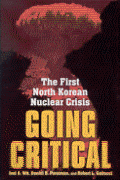
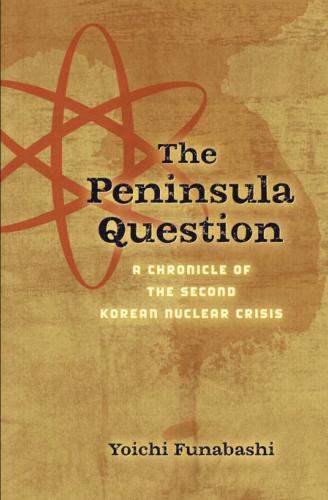
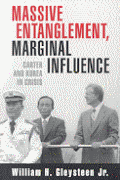
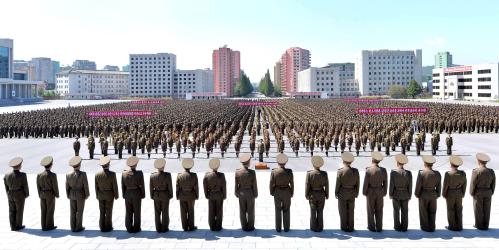
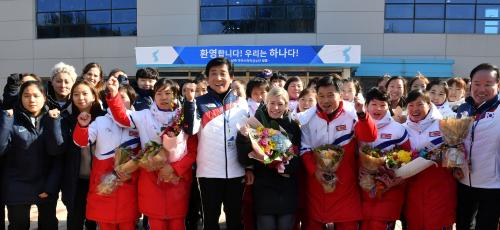
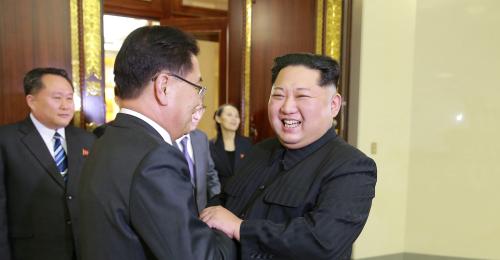


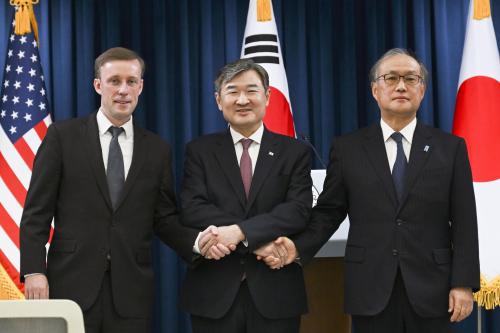
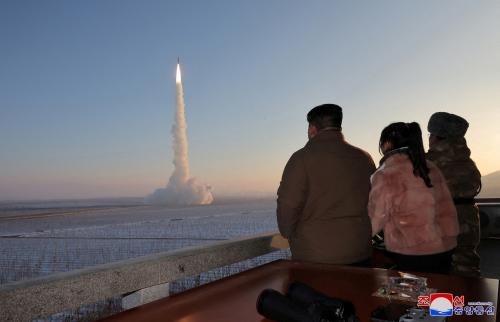
Commentary
Olympic cooldown can help bring North Korea to the negotiating table
January 3, 2018